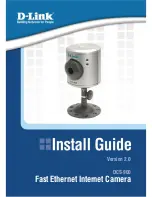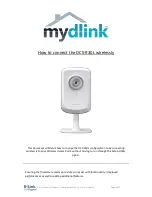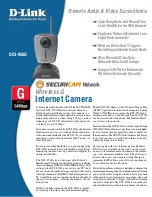
12
TANDBERG
FieldView Administrator Guide
D14098.02 June 2008
often work acceptably if 100% coverage in not mandatory, roaming is not
required, and the wireless network is lightly used. Since good signal quality is
a requirement for good performance, ensuring close proximity to the access
point may overcome limitations caused by violations of the guidelines in this
document. As the demand for quality, coverage and availability increase, the
measures discussed in the following sections should be considered.
If the quality is unacceptable, consider using wired connectivity or making
improvements to the wireless infrastructure.
The Importance of Proper Infrastructure
When implementing a wireless network for voice and video, it is important to
understand the capabilities and limitations that are present in this technology.
The demands of video can be supported; however the infrastructure must be
carefully planned and implemented to achieve the desired performance.
Wireless networks are widely used today, and although they may provide
acceptable performance to users running business transactions or surfing
the web, they may not be adequate for streaming real time media. Voice and
video represent a continuous data stream and can exhibit noticeable visual
or audible artifacts with losses or delays in data delivery. Guaranteeing low
loss and delay is difficult given that the basis of WLAN is radio, a medium
inherently susceptible to effects such as dropout, fade, and interference. But
wireless technology has evolved to make it robust and able to support reliable
communications at rates of up to 54 Mbps, with even faster rates under
development.
To realize the full promise of this technology it must be used within the limits
it was designed for, especially if the payload is voice and video. By following
guidelines aimed at improving and optimizing the radio environment, you can
maximize range and performance, and achieve the best possible use of the
wireless infrastructure.
Special Needs for Voice and Video
Real-time media such as video and particularly voice place more stringent
requirements on the network than conventional data transactions such as
copying files, web browsing, downloading files, etc. In the case of a wireless
network, this is particularly important because improper configuration can lead
to unacceptable performance.
Data protocols are typically fault tolerant. Lost data packets can be recovered
by higher level protocols such as TCP/IP that ensure that every packet is
accounted for. Missing packets are resent. Time is not overly critical and so
recovering missing data can occur in the background without the user noticing.
For example, time to download a file may take a few seconds longer than it
would in a case where the network is not suffering from packet loss.
Conversely, voice and video require real-time delivery. For a real-time media
stream, a late packet is the same as a lost packet. Retry can be used to
recover from lost packets but if the time to do so exceeds tens of milliseconds
then the latency in the voice and video becomes unacceptable to the user.
This is especially significant on wireless networks because, unlike most
wired networks where a lost packet is an unusual event, lost packets are
expected. (Studies show that packet error rates of 5 to 15% are common.)
Minimizing error rate is crucial in order to achieve the best possible streaming
performance.
Fig. 3-1 802.11 b/g Channel Separation
(North America).
Chapter 3
















































